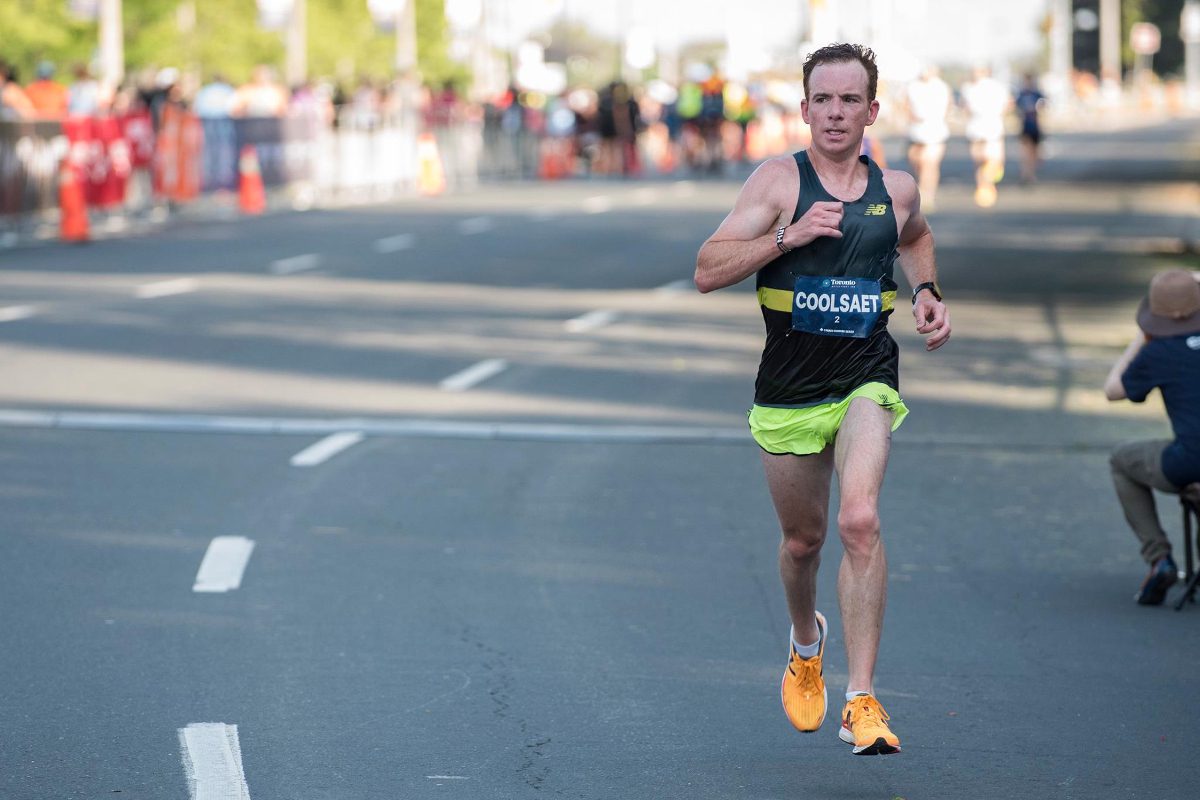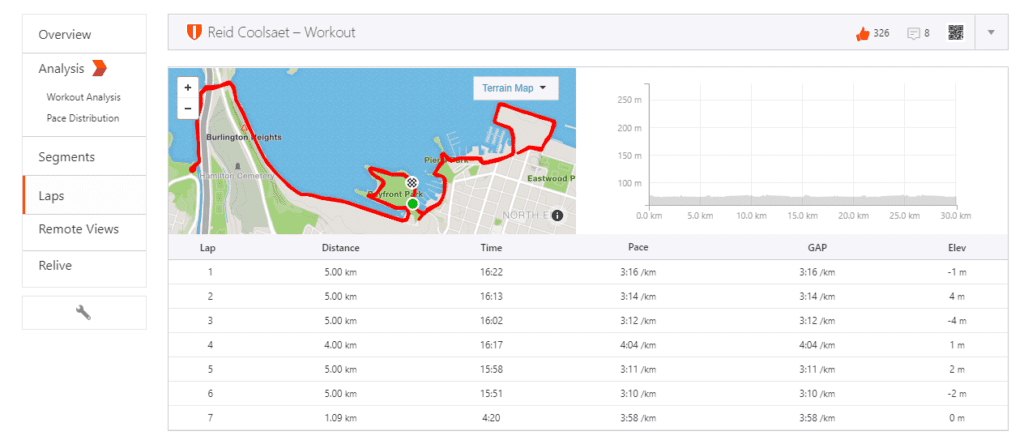Canada’s Coolsaet ready for return to STWM
The 2:10 marathoner will be looking to claim the title of Canadian Marathon Champion as well as gunning for a fast time on home soil.

https://www.instagram.com/p/Bni55TQFS6w/
Reid Coolsaet is the fastest Canadian in the field of this year’s Scotiabank Toronto Waterfront Marathon. It’s a race he’s well familiar with having run it several times before including in 2011 when he qualified for the 2012 Summer Olympics by running 2:10:55. He has since lowered his PB to 2:10:26 making him Canada’s second fastest ever marathoner.
RELATED: Reid Coolsaet’s close call with a career-threatening injury
With just over five weeks until the IAAF gold-label race and Canadian Marathon Championship, we caught up with Reid to see how his training is coming along.
Canadian Running: What do your “biggest” weeks of training generally look like in terms of mileage, key workouts and long runs?
Reid Coolsaet: My biggest weeks will be just over 200km and will include two workouts. Usually one interval session and one marathon pace session. If the MP session is long enough I’ll count that as my long run for the week.
No secrets here, you can follow all of Reid’s training on Strava.
CR: How does your diet/nutrition, sleep, pre/rehab, strength training routines, etc. change/adapt to the biggest weeks of training?
RC: I try to sleep more and make sure I’m eating really well when I’m training for a marathon. When my training is hard I find myself doing more self-therapy and as well as checking in with my physiotherapist, massage, chiro and osteo more often.
CR: How do you approach the training mentally, knowing you have to log the mileage, do the workouts, etc. day in and day out?
RC: Frankly, I just do it. I now know what I need to do to reach the level I want to reach and that motivates me to get it done.
CR: What is your advice/suggestions to other runners preparing for an upcoming marathon? What should they do now to be successful in 4-8 weeks?
RC: Consistency is always key to a good performance so do your best to stick with your schedule as long as you’re not killing yourself to do so. Make sure you have your race nutrition plan tested and ready to go. Practice feeling comfortable and relaxed at goal race pace at least once a week. Run a little bit in your race shoes but don’t wear them out. You want to feel good on race day and every little thing helps.
CR: How important do you feel it is to run tune-up race(s) as part of marathon training, how do you approach them and what value do you see them having?
RC: Running tune-up races isn’t totally necessary but I really like to do it. Even if it’s a low-key race I still like to be familiar with the nerves that come with getting on the start line. I also like to have a set start time and run on a closed course. I don’t treat these races as peak races nor aim for a PB, but rather I use them as specific workouts. I also have fun racing. Adding in a race or two during my build-up makes the process more fun and exciting.
Just last weekend, I ran the MEC Burlington 30km and did most of it hard. And I’ll also run the Rochester Half Marathon on Sept 23rd.



